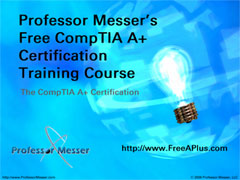 | Chapter 18: Networking
|
 |
Introduction to Networking (21:29) |
 |
Network Cabling (20:16) |
 |
Network Topologies (22:20) |
 |
Installing and Configuring Networks (15:39) |
 |
Using the Network (25:46) |
 |
Troubleshooting Network Connections (19:32) |
 | Chapter 18: Networking
|
 |
Introduction to Networking (21:29) |
 |
Network Cabling (20:16) |
 |
Network Topologies (22:20) |
 |
Installing and Configuring Networks (15:39) |
 |
Using the Network (25:46) |
 |
Troubleshooting Network Connections (19:32) |